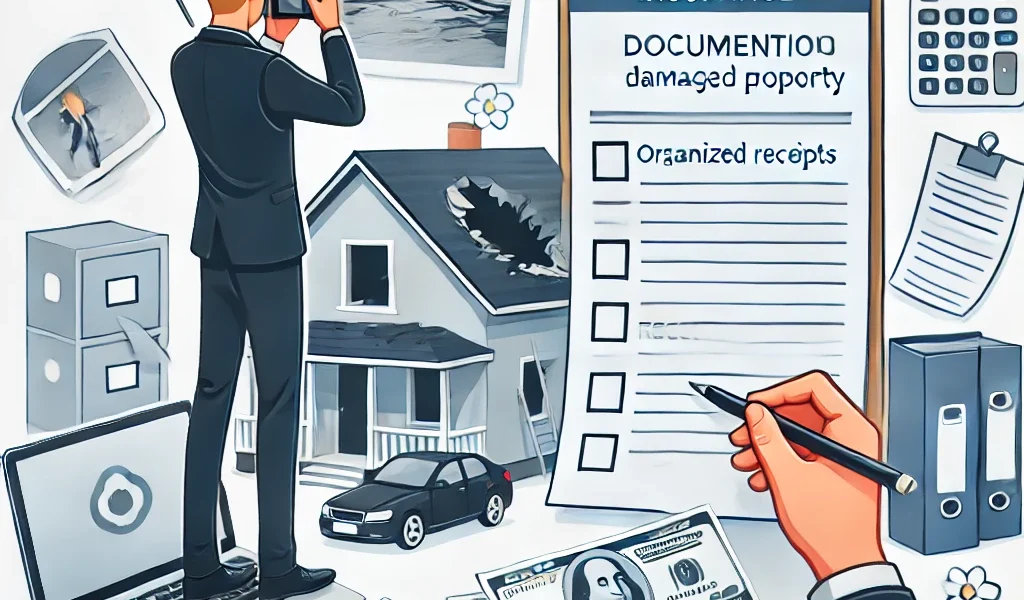When an unexpected loss occurs—whether due to an accident, theft, natural disaster, or medical emergency—filing an insurance claim is the first step toward recovering your financial losses. However, many claims are delayed or denied due to inadequate documentation. Properly documenting losses is crucial for ensuring a smooth claim process and maximizing your chances of getting fair compensation.
In this DIY guide, we’ll walk you through the essential steps to document losses effectively so that your insurance claim gets processed without unnecessary hurdles.
1. Why Proper Documentation Matters
Insurance companies require solid evidence before approving a claim. Incomplete or inaccurate documentation can lead to:
- Delayed claims processing due to missing information.
- Reduced compensation if the insurer cannot verify the full extent of the loss.
- Claim denial if proof of ownership, value, or damage is insufficient.
By maintaining well-organized records, you strengthen your claim and reduce the likelihood of disputes with your insurance provider.
2. Steps to Document Losses Properly
Step 1: Review Your Insurance Policy
Before documenting any losses, familiarize yourself with your insurance policy’s coverage. Pay close attention to:
- What is covered (e.g., property damage, medical expenses, theft, liability claims).
- Claim limits and deductibles (the maximum payout and the amount you must pay out-of-pocket).
- Required documentation (some policies have specific requirements for proof of loss).
Step 2: Take Clear Photographs and Videos
Visual proof is one of the most effective ways to document losses. Follow these best practices:
- Photograph damaged items from multiple angles, including close-up shots.
- Take wide-angle images to show the extent of the damage in context.
- Capture timestamps by enabling date and time settings on your camera or phone.
- Record a video to provide a detailed walkthrough of the loss, narrating relevant details.
Step 3: Maintain an Inventory of Lost or Damaged Items
If your claim involves property damage or loss, create a detailed inventory. Include the following information for each item:
- Item description (brand, model, specifications).
- Date of purchase (or estimated age of the item).
- Original purchase price and current estimated value.
- Serial numbers (if applicable).
- Receipts or invoices as proof of purchase.
Step 4: Obtain Third-Party Reports and Statements
For certain types of claims, official reports from third parties can strengthen your case:
- Police reports (for theft, vandalism, or auto accidents).
- Medical reports (for health or accident claims).
- Fire department reports (if fire damage is involved).
- Eyewitness statements (for incidents involving third-party liability).
Step 5: Collect Repair Estimates or Replacement Costs
If your property has been damaged, you’ll need professional repair or replacement estimates. Contact multiple vendors and obtain written estimates for repairs. This helps:
- Validate the extent of the damage.
- Provide a cost basis for your insurance claim.
- Avoid lowball settlement offers from the insurance company.
Step 6: Keep All Communication Records
Maintain a file with all correspondence related to your claim. This should include:
- Emails, letters, and messages exchanged with your insurance company.
- Notes from phone conversations (date, time, and name of the representative spoken to).
- Claim submission receipts or acknowledgment emails.
Step 7: Use a Loss Documentation Form
Some insurance providers offer standardized loss documentation forms. If available, fill out these forms thoroughly and submit them along with supporting evidence.
3. Common Mistakes to Avoid
To ensure a smooth claim process, avoid these common mistakes:
- Not documenting losses immediately – Waiting too long may weaken your claim, as evidence can be lost or disputed.
- Providing incomplete details – Missing receipts, vague descriptions, or lack of proof can delay claim approval.
- Throwing away damaged items too soon – Your insurer may require an inspection before disposal.
- Exaggerating claims – Providing inaccurate information can lead to claim denial or legal repercussions.
- Failing to follow up – Regularly check your claim status and respond to insurer requests promptly.
4. How to Organize Your Documentation for Easy Access
To keep your documentation organized:
- Create a digital folder with categorized subfolders (e.g., “Receipts,” “Photos,” “Police Reports”).
- Use cloud storage (Google Drive, Dropbox) to ensure you have backups.
- Maintain a physical file with printed copies of critical documents.
- Use expense tracking apps to log purchases and store receipts electronically.
5. What to Do If Your Claim is Delayed or Denied?
If your claim is taking too long or gets denied:
- Request a written explanation – Insurers must provide a reason for the delay or denial.
- Gather additional evidence – Strengthen your case with missing or new documentation.
- Negotiate with your insurer – Provide supporting documents to justify your claim.
- File an appeal – If you disagree with the decision, submit a formal appeal.
- Seek legal help – If necessary, consult an insurance attorney or a public adjuster.
Conclusion
Properly documenting losses is essential for a hassle-free insurance claim process. By following this step-by-step guide, you can ensure that your claim is well-supported with clear evidence, reducing delays and maximizing your chances of approval.
Stay organized, be proactive, and communicate effectively with your insurer to secure the compensation you deserve. If needed, seek professional guidance to strengthen your claim further.




